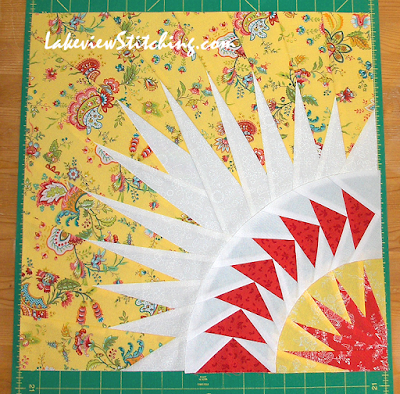This is my red and white version of Bonnie Hunter's Roll, Roll, Cotton Boll. You last saw it on New Year's Day. Since then I've been steadily making the 500 HSTs required. Now that's done and the blocks are coming together fairly quickly. It reminds me of a building project, where for the first half of the project it's just a big hole in the ground, and then all of a sudden it starts growing fast!
These rosy florals are so fun to work with. This dark pink is from Eleanor Burns' Forever Love collection.
I've also used a few fabrics from the Savannah Garden collection from Henry Glass. This red looks even better than I expected cut and sewn.
And this is the main Savannah Garden floral in white. I believe the ditsy red print is from my old LQS, now closed for many years, and the white on white blender too.
I had planned to make the whole quilt from stash. But, it turned out that I had plenty of cream florals, but none of the reds that I imagined. So, woe, a little online shopping was required. I lost my head at Missouri Star, but I'm certainly not having any regrets now! I like all kinds of fabric, but these florals feel like home.
I'll need 25 of these blocks. More to come!








